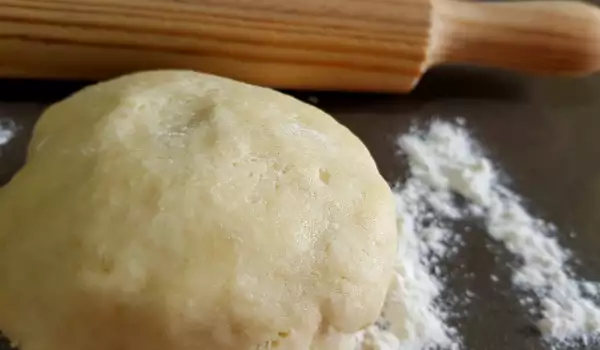Gluten is a protein compound, obtained by combining the two main proteins in wheat - gliadin and glutenin, which are activated by adding water and kneading the dough. Fibers of gluten are formed, creating a strong and flexible web. The more gluten there is in dough, the more elasticity it will have.
While excessive gluten is not recommended in sweets, it is important in the preparation of bread and bakery products. It is important to knead the dough and leave it for the necessary amout of time for the gluten to develop properly. The dough is usually considered ready when it is smooth and soft, but not sticky. You should be able to roll out the dough into a square, so that light can be seen through it.
One of the mandatory requirements for making dough with more elasticity is that it needs to sit for a while, before being processed. If the dough goes back into it's shape when stretched, the dough needs to sit for a while longer. If the dough breaks or cannot be formed, it needs to be kneaded additionally. If it sticks to the surface, then the dough needs more flour.
Kneading the dough is important. It should last for 10-12 minutes by hand or 8-10 minutes in a mixer. If you have been kneading the dough for that long, you can be sure that you have done your job well.
Here are a few more things you can tell by if gluten has activated and if the dough is elastic enough:
1. Smooth dough - At the end of kneading, you should have a smooth dough and it should be slightly sticky to the touch.
2. To maintain its shape - Lift the ball of dough in your hand and hold it in the air for a second. If it retains its ball shape, it means that gluten is activated and firm. If it falls between your fingers, the gluten muscle is still flexible and needs more kneading.
3. Finger test - Form the dough into a ball. Insert your finger in the dough to make a hole. If the dough returns to it's shape quickly, then it is ready for use. If the hole remains, continue kneading it.
4. Window test - Pull a piece of dough the size of a golf ball and stretch it into a thin sheet between your fingers. If the gluten is well developed, the dough will be transparent and stretch. If it breaks, continue kneading it for another 2 minutes and try the test again.



















Comments